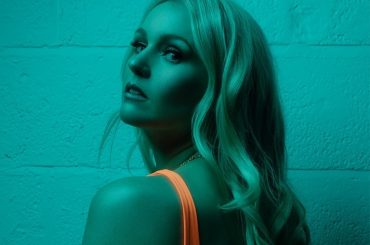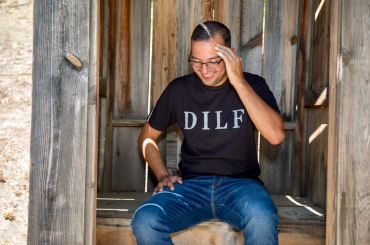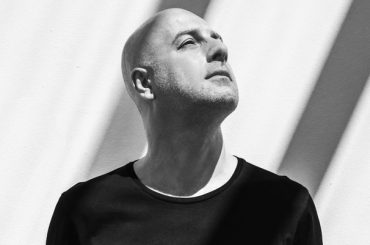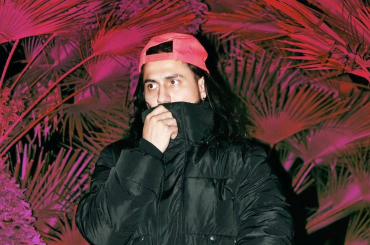Playing Tough Techno & Throwing Devoutly Underground Events, Minnesota’s DVS1 Maintains a Quaint, Yet Effective DIY Ethic
Brooklyn, N.Y. – As I step out of the taxi between the Wythe Hotel and Output—New York’s hottest late-night destination—I notice that the freezing rain hasn’t let up a bit. Still, I can see a line of soggy fans beginning to stretch down North 12th Street, adjoining the club. Tonight, proper techno’s on the agenda—Ben Klock and DVS1—and these crazies aren’t going to miss a beat.
Klock is a Berlin legend, an original resident at Berghain, the world’s most vaunted venue for techno. Meanwhile, DVS1 (aka Zak Khutoretsky) is the rare U.S.-based DJ to regularly play the famously fussy club. But his Berlin acceptance shouldn’t surprise anyone, as his approach to the genre is as dedicated as his passions for the art of DJing and the craft of production. And like a lot of DJ/producers who’ve ultimately succeeded on their own terms, the 35-year-old Minneapolis resident has maintained a Do-It-Yourself ethic since the good old rave days. In addition to producing and operating a pair of techno imprints—Hush Sound and sub-label Mistress Recordings—DVS1 continues to run renegade warehouse events in the Twin Cities. Oh, and he still spins half of his sets with vinyl.
Back at Output, DVS1’s set features rumbling, energetic techno spiced with cuts from his labels and the headliner’s Klockworks imprint. Think Carl Cox in the vinyl days, but with the tracks pitched up to the breaking point. He’s the middle act, but he’s definitely got everyone’s attention. Heads are bobbing, hips are swaying and there’s plenty of, “Look! He’s playing vinyl!”
The word appears to be spreading about DVS1, even beyond the techno elites, and the calendar’s filling up. After another New York gig—at Cielo, usually more of a haven for house—he’ll head back to Europe (Russia, Holland, Italy and Germany), do a jaunt to Australia and then take another North American swing. He’s come a long way from those crazy Midwestern raves of the ’90s. We caught up with DVS1 and it went like this:
DJ Times: Your beginnings?
DVS1: I was born in St. Petersburg, Russia—in the old Soviet Union—in 1978, but I grew up in Minneapolis. My mother and father divorced. My father moved to New York when I was four or five, my mother to Minneapolis, and I would go back and forth between the two.
DJ Times: What put you on a musical path?
DVS1: It was the radio, mostly. My mother got me playing piano and my father got me into cello, but it was mostly listening to the radio with fellow friends. Wish I’d stuck with piano. But that experience gave me an appreciation for it. I played eight or nine years. I played recitals.
DJ Times: And dance music?
DVS1: I remember being turned onto what I’d consider dance music of that time. It was music that had synthesis, music that had beats, music that you could shake and twist to. I remember as a kid saying, “Mom! Watch me dance!”
DJ Times: DJing? What got you into it?
DVS1: Someone took me to a party. I always say that you have a 50/50 chance of being taken to the wrong party, for starters. I was on the right side of that 50, and someone took me to a proper party. It was a rave with good music. It was somewhere in the suburbs of the Twin Cities, in Hopkins. I don’t remember the DJs—but I remember it was a good party.
DJ Times: And clubs?
DVS1: In Minneapolis, there was an all-ages Sunday-night dance party at our legendary nightclub, First Avenue, the club where Prince filmed “Purple Rain.” The DJ’s format was five dance records, then five hip-hop records, five grunge records—whatever. You’d kind of figured out what you liked from those five records. I always attracted to dance music. I got into hip hop later on, but I liked dance music right away. I saw my share of bands at First Avenue, but my late-night adventures were driving to rave parties with DJs and techno music, electronic music, proper house music.
DJ Times: What were the mid-’90s raves like in the Twin Cities?
DVS1: It was a place that that had amazing sound systems and this ties into how I make music even now. We were listening to music and sound on 100-speaker-box systems in warehouses, so I was that guy who was sitting on the edge of the sound system where I still felt the pressure of the system, but I was watching the DJ. I was enamored by what the DJ did with his manipulation of sound with how he EQ’d things. I was watching and learning.
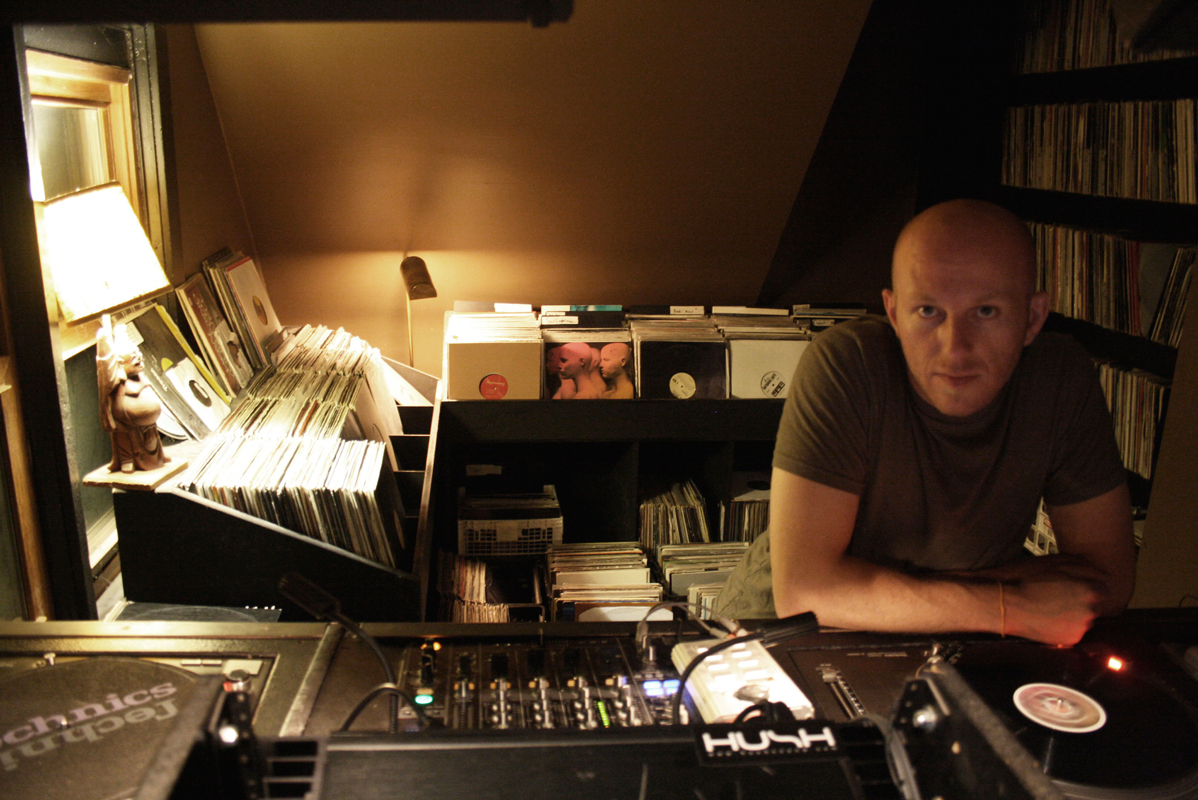
DJ Times: Your first DJ system?
DVS1: After I went to boarding school in Connecticut, I got turntables from a guy who was a hip-hop DJ, who was moving back to Japan. They were Gemini belt-drive turntables, plus a Radio Shack DJ mixer. That’s what I started on.
DJ Times: Back in the Twin Cities, how did you progress?
DVS1: I was seeing the scene in New York and I saw it in other Midwestern cities, but in Minneapolis it was body music. It was the pressure, how they presented this music. Every generation learns from the previous generation, so we were all learning from the generation that went over the top with sound and production, not glitz and glamor, but force—speakers and stacks. The sound was at a pressure where you had no choice but to take it in and be a part of it.
DJ Times: How long did it take for you to feel comfortable playing in front of people?
DVS1: There was about a year or two where I just stayed in my room and did what I did. When I was back in Minneapolis, I got myself a spot at a party opening and then I got to play at a bigger party. I was thrown into a position where I had to do it.
DJ Times: How did you advance up the ladder?
DVS1: The Minneapolis club culture has always shut down at 2 a.m., so there’s always been a need for underground events. And with underground events, you have to learn how to do things for yourself. You have to put up the sound, do the lights, build the booth, sell the tickets, clean the space. You do everything and you learn all facets. The reality was that there were other people doing things, but they had their own crew, their own people.
DJ Times: So you did your own thing?
DVS1: Right. If you wanted to do something, you had to do it yourself. So, in 1995 I started to throw my own events. And I put myself on at one of them—not in a prime spot, but I was on the bill. So it was just being around and being respected for what I did. I always brought my “A game.” I brought a better sound system than the next guy. I found a better space than the next guy. I brought better talent than the next guy. And from going out and DJing, people just noticed, like, “Oh, he DJs, too?”
DJ Times: He’s that guy.
DVS1: He’s that guy! He’s doing it all. A lot of my friends were taking Friday nights to go to the bar to hang out, but I’d be at home messing with music or record shopping or digging through my records. I immersed myself in this 100-percent.
DJ Times: And 1995 was an interesting time for regional dance music, like the Midwest.
DVS1: The underground was going full-skirt. The rest of the world had no idea what was going on. I think that was actually the heyday for a lot of those scenes. There was Chicago and Detroit, but in Wisconsin you had the Drop Bass guys. To this day, if you tell people you were part of one of those scenes, you have an automatic bond.
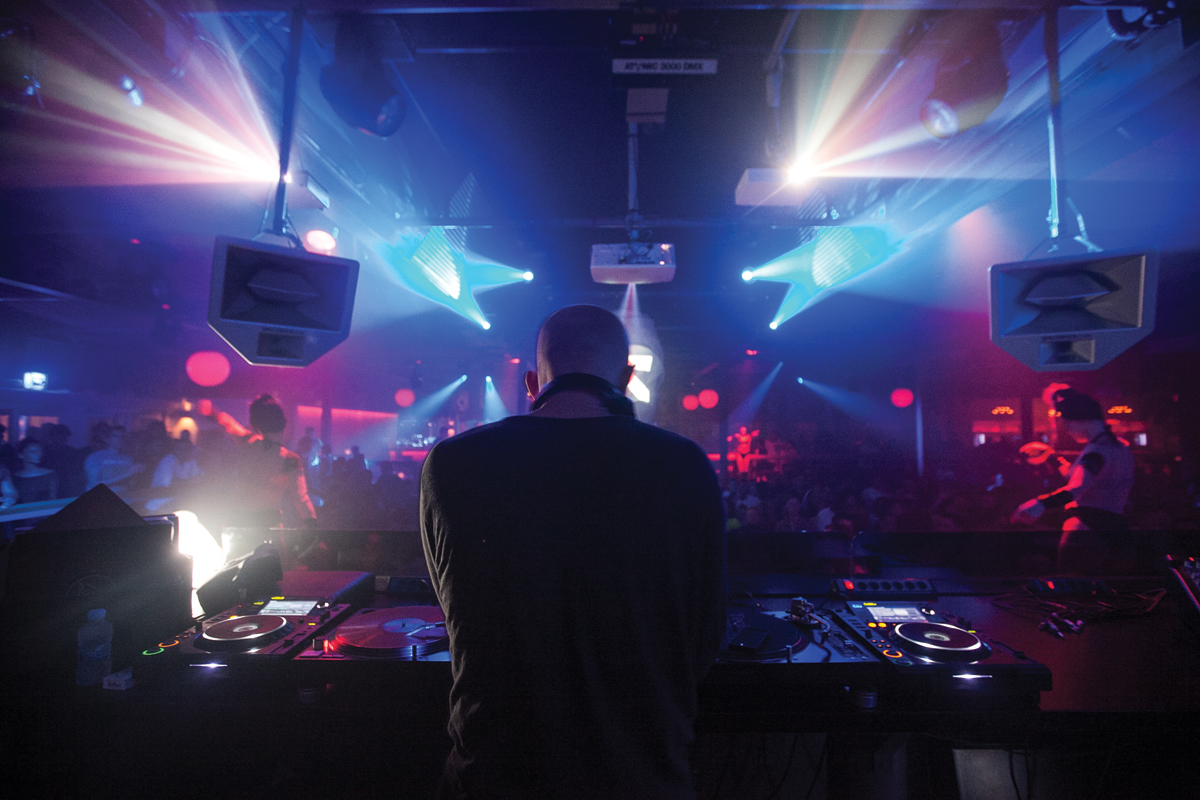
DJ Times: You’d have crazy raves out in the woods…
DVS1: In the middle of nowhere, they’d just set up parties and 5,000 people would show up. It was completely lawless. That was the same way that I remember New York at the time. I went to these renegade parties that were with the Park Rave Madness guys. Because it was lawless and because it was new, it wasn’t just new to the crowd, it was new to the DJs. So the tracks they were playing and the records they were getting were new.
DJ Times: That’s how both DJs and fans got turned onto new tunes back then.
DVS1: Right, this music wasn’t in commercials yet. There was no Facebook. So it was special to go out on that Friday or Saturday night to hear this. You felt like it was something new being created at that moment. Now, a lot of times, it feels like a regurgitation of things, but it’s just a different place and time. To be a part of that in 1995 was very special and unique.
DJ Times: Most memorable event you threw?
DVS1: My biggest party I did in Minneapolis was called 420 because it ran on April 20, 1997. I booked Haiko Laux who runs Kanzleramt Records. I had Electric Indigo, Neil Landstrumm, Tobias Schmidt, Dave Tarrida, Shandy, DJ Slip, me, this guy Apollo from Minneapolis. I mean, Chicago was bragging about this party called United Nations and they had five international headliners, but I had eight DJs from overseas.
DJ Times: Favorite DJ set from that time?
DVS1: Laurent Garnier in 1996 in Minneapolis. A lot of these guys I mentioned were in the height of their creative and dancefloor periods as DJs. As they’ve gotten older, they’ve changed direction—because your tastes change. But I got to see a lot of these pioneers when they just lived for the dancefloor and it was a really cool time to see them.
DJ Times: Let’s fast-forward to production. How did you evolve into making music yourself?
DVS1: Let me just state that I’ve always been a DJ first, production has always come second. But, as for making music, I had a lot of gear, but I wasn’t finishing anything. Ultimately, I decided to challenge myself by doing a live set, which I’d never done before. To get ready for my live sets, I sat in the studio and wrote tracks. In the end, those tracks became my first two releases for Ben Klock [“Klockworks 05” EP on Klockworks, 2009] and Derrick May [“Love Under Pressure” EP on Transmat, 2010]. I’ve been really lucky in that everything in my story has happened naturally. I didn’t set out to do this 15 years ago, or even five years ago. You put this much into something and it gives back to you.
DJ Times: How did you transition to playing in Europe?
DVS1: I had a chance to play in Europe about 12 years ago, randomly. Nobody knew who I was. I played at Tresor [in Berlin] and Belfast, but that was as a result of an exchange of me booking some people in the past. But then I came as a result of some releases. That was for Ben Klock’s CD release party at Berghain. It was me, Marcel Dettmann, James Ruskin, Rob Hood and I was the closer that day in Berghain. That was four and a half years ago.
DJ Times: How’d it go?
DVS1: I got there and I looked around so see and hear what they were doing. Except for Rob Hood, they were all playing slow—128 BPM. I play fast—134, 135, 136. My internal momentum is faster and I looked around and realized that I can either try to change and do what they’re doing, or I gotta do what I do because I can’t hide who I am. I sped it up and started playing faster and I opened it up, I think, beyond people’s expectations at that moment, but I did me. And the fact is that they vibed out with me. They felt me and then I got more bookings from there. And now my reputation is that of a DJ, not a producer. To me, that’s more important. In the end, it’s “a DJ saved my life,” not “a producer saved my life.”
DJ Times: What’s it been like for you to play at Berghain?
DVS1: As a DJ doing what I do, as someone who plays there six or eight times a year, I would not be as fulfilled if I didn’t have Berghain. It’s the people, the atmosphere, the sound, the DJ booth, the ability to spread out and play eight- or 10-hour sets. And to be trusted by those people… To do that on a regular basis, you just don’t get that anywhere. When I have a bad gig, I take it personally. Other DJs might just collect their check and go to the next gig. I use both the bad gigs and the good gigs as motivation.
DJ Times: What’s a typical good night for you?
DVS1: It’s gotta be Sunday afternoon or later. From my perspective, midnight to 6 a.m. is the tourist time for the people who’ve heard about Berghain. Then at 6 or 7 a.m,, they start leaving—they’re not ready for a 20-hour party. Then the Berlin regulars start to wake up for breakfast—they eat, they come, and party all day. About noon, that place kinda has a crossover switch that happens and by Sunday night, it’s a whole other world in there. It’s lubricated. It’s sweaty. Everyone’s in it, everyone’s a part of it. They’ve fully broken the seal. It just takes on another life at that point. To be able to come in at that hour and play to those people is amazing. They’re down to do whatever you want.
DJ Times: Nothing really like that back in the U.S.A., huh?
DVS1: In America, we live on short attention spans. And the hardest thing around here is that a lot of DJs are brought up on one-hour or 90-minute sets. As a DJ, all you can do in that time is just show your guns. But when you’re playing 10 or 12 hours, you’ve got to have the skill, the depth and the knowledge to go up and down and left and right.
DJ Times: A good number of the EDM-festival-goers have never had that experience—some have never even been to a proper club.
DVS1: Right, and for that, you have to be down for the journey. If you look at music as an example of its generation and you look at today’s generation of short attention spans with Facebook, phone, text, anything, the popular commercial scene is a perfect representation of that. It’s a constant barrage of information. If the track doesn’t change every 30 seconds or a minute [quickly snaps his fingers], people get tired of it. But, to give a great example, the people at Berghain will stay with you for eight, 10 records while you figure out which direction you wanna go. You don’t lose them after one “bad track” or one left turn. They’ll stick with you to see where you’re gonna come back.
DJ Times: Alright, gear-slut time. What’s your set-up?
DVS1: Two Pioneer CDJs and two Technics SL-1200 turntables, but I ask for the MK5G’s, which are the plus-16/minus-16 decks. The reason? I like to play old house tunes fast and I like to play to play old techno slow.
DJ Times: Mixer?
DVS1: I don’t like the layout, but I’m getting used to the Allen & Heath Xone mixers because I’m realizing that I’d rather sound good. I don’t need effects—I don’t need to fluff my mixes. The filters are nice. I don’t need a 4-band EQ, but I’m a DJ who’s technically proficient. At the end of the day, I’ll make do with whatever.
DJ Times: These days, what’s the breakdown between playing vinyl and CDs?
DVS1: It’s 50/50. It used to be all vinyl, obviously. But when I started traveling, I realized being on the road for four or five weeks at a time, I’d get tired of going through the same record bag for four weekends—so I started bringing CDs just to change it up. Then I started road-testing tracks, getting [digital] promos.
DJ Times: So you’re fine with digital, then?
DVS1: Well, I’ll never switch to all-digital because, to me, I end up playing all straight and linear. The vinyl, sonically, has changes. It has a different momentum—it just feels different. So, the mix of half-and-half is just right for me. I treat my digital organization of music the same way I organize my records. I have three levels of crates—floor crates, second-level and back-stock.
DJ Times: But no Serato, no Traktor…
DVS1: No. I don’t think a laptop belongs in a DJ booth. Looking at your screen is not necessarily exciting. People forget the feelings you get standing on the dancefloor watching a DJ look through his records. As the DJs would look through their box, you felt this anxiety with them and when they found that record and they pulled it from the sleeve, the crowd would know that… he found it! They’re watching and waiting until he puts that fader up… wooo! Now it’s just some dude looking at his screen. So, for me, going through the record bag or CD book is part of that vibe, and I need it as much as the crowd needs it.
DJ Times: Let’s talk about the evolution of your production.
DVS1: I once used all-analog gear, but I ended up using Reason early on and I stuck with Reason. Honestly, Reason’s integration is like analog in a digital world, the way you can flip the rack, the way that you can configure wiring and just experiment with it. Now it’s grown to the point where you can work with external machines, so I’m a die-hard Reason fan.
DJ Times: And your sounds and percussion?
DVS1: Sounds come from synthesis. Other than a remix, I’ve never released anything yet that’s used a sample. Everything’s been proper synths, proper drum machines inside Reason—and me doing the manipulation. There are a couple tracks where I’ve used some sampling, but just for a sound or a noise.
DJ Times: What’s it like running a label today?
DVS1: I work with Hard Wax in Berlin, and they’re my worldwide distributor. They believe in my music, they believe in me, and they have a very simple model. It’s no fluff, no gimmicks—if it’s good music, it sells. I believe in the old style of releasing music. You don’t put out an original and five remixes, like people are doing it today. I believe in three or four originals, and maybe one remix that has a meaning or a connection to it.
DJ Times: So how do you survive?
DVS1: People are struggling to sell more than 200 or 300 units of vinyl right now, but we’ve sold 500 to 1,000 every release. Some have broken 1,500 even—on vinyl that’s not even available digitally. As for the vinyl market, obviously, Germany is at its height because of the number of DJs and the number of clubs and people who use records. There are plenty of record stores in Berlin and plenty more popping up. In America, we struggle, obviously.
DJ Times: With the big dance-music explosion, are you seeing any migration from the festival/EDM world to the underground?
DVS1: I think it’s the 3- to 5-percent. I don’t believe that 95-percent of this audience will find its way to different music. I kinda don’t think they all like the music that they’re listening to anyway—they’re just inside of something that popular and fun. I can’t hate on them—they’re all having a good time. It’s just not for me.
DJ Times: For you, what’s the upside of this cultural shift, then?
DVS1: Yeah, it’s created a situation where “house” and “techno” are no longer bad words. Ten years ago, you had the anti-rave laws where they were shutting down anything with words like “house” and “techno” and “electronic music” attached to the events. Now, you have the New York Times and the Wall Street Journal writing about EDM’s success, they’re no longer bad words.
DJ Times: Tell me about the underground events that you still throw in the Twin Cities. From what I understand, it’s a little bit like your own version of David Mancuso’s famous Loft Parties.
DVS1: It’s my version and my vision. Since 1996, I’ve always done parties. Over the past eight years, I’ve done them in a few different spaces. But in the last four years, specifically, we’ve had a space that we don’t advertise on Facebook, don’t advertise publicly. For the events, it’s a private email list hand-picked by us, hand-checked by us. Everyone’s a member—we give memberships out. We announce the parties two or three weeks before we do them to only the email list. We don’t allow anyone to re-post it, don’t allow anyone to talk about it publicly. The space holds 300 to 400 people. It’s mostly local DJs and usually one outside DJ—like our next one is with Ben Klock. We only do six to eight events a year. We have an amazing [Turbosound Flashlight/Floodlight] sound system in there—it’s the best illegal club in the city [laughs].
DJ Times: Advice for rising DJs?
DVS1: If you give enough to something, it will give back to you—so don’t do this for the wrong reasons. Don’t do this to be popular. Don’t do this to make money. Don’t do this to get girls and champagne. Don’t do this to be cool. If you do this because you love it, ultimately your love and passion becomes quality and skill.
[button_2 color=”#ff0011″ size=”button-med” icon=”none” text=”Read More From This Issue” link=”http://viewer.zmags.com/publication/20ad5266#/20ad5266/4″]





